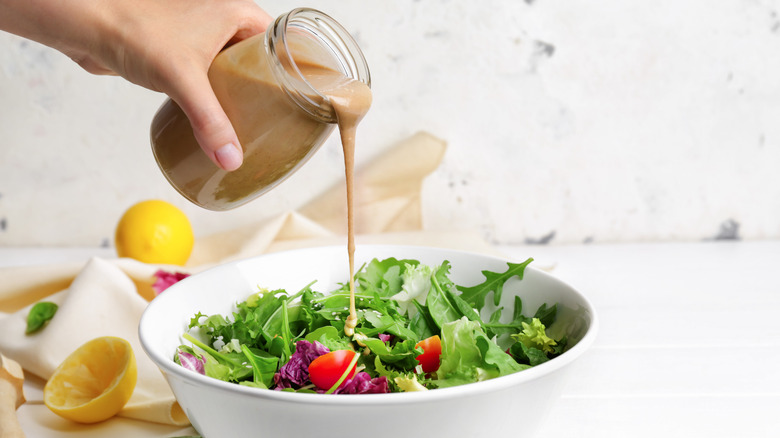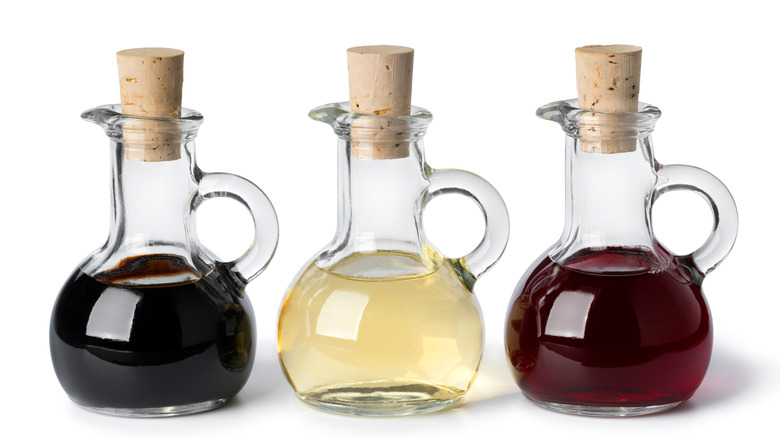What To Do If Your Salad Dressing Is Too Acidic
Given salad's simple, sensible preparation, it might not come as a surprise that the art of making these arrangements of leafy greens dates back to the ancient Greeks, as evidenced by The British Museum's recipe for an Athenian cabbage slaw from the 4th century BC. But did you know that salad dressing is just as old, if not older? According to The Association for Dressings and Sauces, citizens of Babylon devoured their veggies with oil and vinegar.
The Association for Dressings and Sauces notes that salad dressing has a long history in the U.S., too. One such story involves Joe Marzetti, who opened a restaurant with his wife Teresa in Columbus, Ohio, in 1896. The restaurant became known for its array of signature dressings that proved so popular that Teresa wound up bottling them in 1919, kicking off a condiment and specialty food empire that still thrives today (per T.Marzetti).
Whether it's bought from the store or made fresh at home, it's hard to deny that dressing plays an essential role in making salads appealing. Though there's a broad range of flavors and methods of preparation, you're likely to find ingredients like olive and other oils, mayonnaise, buttermilk, vinegar, lemon juice, or mustard in your salad dressing recipes (via South Dakota State University). Getting the ratios right is tougher than it looks, however. Luckily, if you find yourself with an overly acidic dressing, there's a way to rescue your salad.
Add a basic ingredient for balance
To fix your salad dressing, let's look to science. Foods, like most substances, can be measured on the pH scale as acidic, neutral, or basic. According to Healthline, "pH is measured on a scale of 0 to 14. Substances over 7 are categorized as basic, with 7 being the neutral point. Water has a pH level of 7. Substances with pH levels under 7 are categorized as acidic." As vinegar is an ingredient that is often in salad dressing and, depending on the type you are using, it can be anywhere from 2.5 to 3.5 on the acidic scale, it can easily overwhelm a salad dressing with its acidic taste (per Supreme Vinegar). Lemon juice has a similarly low pH.
The best way to reclaim your overwhelmingly tart dressing's flavor is to apply the rule that "acid + base = neutral." To tone down the acidic tang, Cooking Light recommends adding in a softer food like avocado. Epicurious, meanwhile, suggests reeling in your mouth-puckering dressing with sweeter ingredients like honey, agave, or molasses. You can also use a few drops of water to dilute your emulsion. Simply stir in whatever basic additions you've chosen incrementally to achieve your desired taste.

